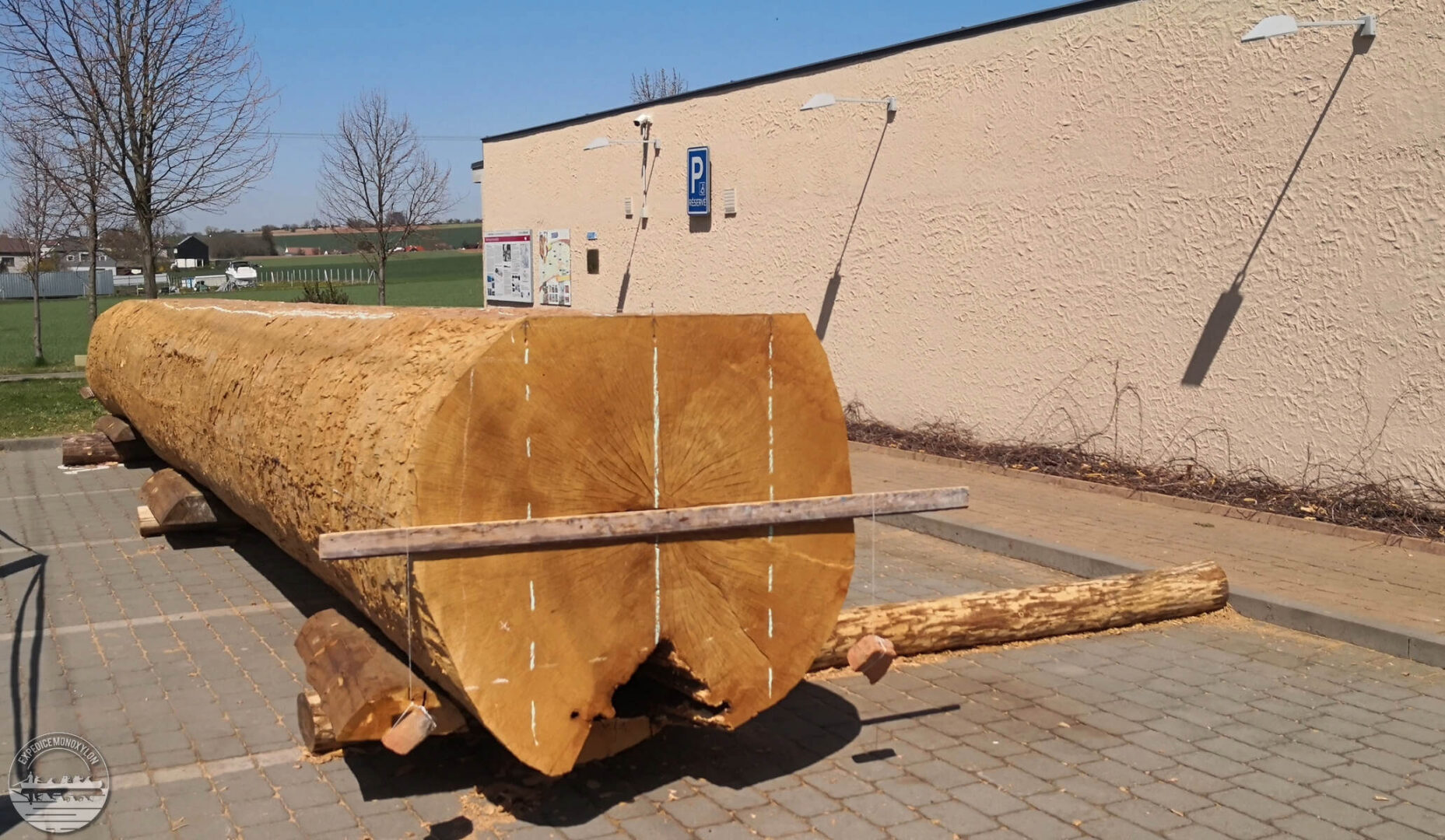thanks for your support
The Monoxylon IV expedition
Only thanks to a lucky coincidence, we managed to obtain the massive trunk of the 300 year old oak which had been ripped out from the ground by a violent storm in the forest enclosure named Mochov near the town of Opocno. There, it grew for hundreds of years, looked after by the local foresters. This was such a unique opportunity to craft our largest monoxyl and we started to plan yet another expedition Monoxylon, this time with number IV. Its motto is clear: “The Story of the King of Mochov”.
For the whole year 2022 we were working on a dugout boat which could almost precisely fit the dimensions of the dugout – monoxyl found by Italian archeologists in the Lake Bracciano. We tested the new monoxyl in September 2022 on the Czech lake Rozkos, where it was also baptised with the new name: “The King of Mochov”. There it proved to be ready to go on the journey in the tracks of the first Neolitic farmers migrating to Europe and follow their ancient footprints around the chain of the Greek islands between the important archeological sites Cukurici and Franchthi.
On 19 th June we are going to set off again with our new monoxyl into the waves of the Egean sea !
Route
There is a sound evidence that 9000 years ago, in the Neolithic era, during the process of spreading the agriculture from Near East to Europe, there must have been, apart from the land bridge (across Anatolia), also an important sea-faring connection across the sea to Greece.
This ancient sea route was partially copied/followed by our previous two expeditions Monoxylon I (1995) and Monoxylon III (2019).
We are now planning to use this ancient migration route of the first farmers and follow it in our next Expedition marked as Monoxylon IV which will use the new dugout boat named “The King of Mochov”.
boat
For this 4th expediton we made an entirely new dougout boat – monoxyl which we named “The King of Mochov”.
We cut, curved and shaped the great oak trunk, originally weighing 14 tons, into the boat with trully impressive dimensions. The production of the boat took about 1000 working hours. A third of the length of the boat was worked on by the stone tools of the Neolithic era, and the remaining parts were done by the modern tools which were used to save time.
Dimensions of the “King of Mochov” monoxylon
- weight: 2.8 tons ( dry condition )
- length: 11.5 m ( without the steering oar)
- width: 1.2 m ( in the whole useful length )
- crew: 21 persons ( 20 paddlers and 1 helmsman )
The dimensions and regular shape of the tree, we used to make our new monoxyl, finally gave us a chance to built a close replica of the original neolithic boat found on the archaeological site “La Marmotta” in the Italian Lake Bracciano. From the boat named “Anoula”, which we had paddled and sailed on our previous expeditions, we decided to use the well proven mast and the sail of hypothetical shape, even though such technical elements have so far only been connected by archaeological finds to the later era. However, we believe that they respect one of the main factor of the sea faring – the wind.
Even though our main inspiration and model for our new dugout boat has been the Italian archaeological find from Lake Bracciano, there were some other finds of the same type of water craft from Greece but all of a slightly younger date. The important factor is that this is the water craft with the active propelling motion on the sea. We believe that similar dugout boats could stand at the very start of the evolution of the wooden boats and vessels in the Mediterranean area.
During the testing of the “King of Mochov” on the Lake Rozkos, the average speed, without the use of sail, was measured at about 5 km/h (3.1 mph). When the 20 paddlers made a maximum effort (for about 15 minutes) we managed to reach average speed of about 7.5 km/h (4.7 mph). The boat shows a great stability even with the sail on.
So, wish us luck on the sea !










































